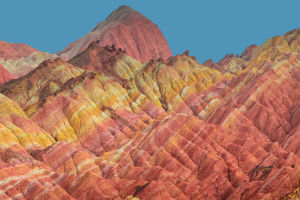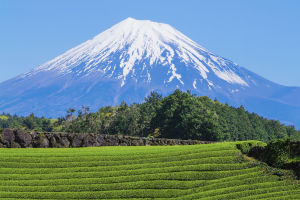Mount Moran is a magnificent peak located in Grand Teton National Park, Wyoming, USA. With an elevation of 12,610 feet, it is one of the most dramatic and picturesque mountains in North America.
Named after Thomas Moran, a famous American frontier landscape artist, this mountain offers a unique and remote climbing experience.
Unlike other peaks in the South, Mount Moran is not easily accessible. There are no fixed trails to the foot of the mountain, and any land route would require extensive bushland through the vegetation, dead trees, and marshes surrounding Lake Leigh. The most common approach to climbing Mount Moran is by kayaking from String Lake, across Leigh Lake, and then picking a route.
However, even then, some overland routes may have to be found. As a result, most climbers choose to climb Mount Moran for several days, even if the technical part of the climb is relatively short.
For the ultimate wilderness mountaineering experience, climbers can choose the dramatic direct South wall of Mount Moran described in Steve Roper and Alan Steck's "50 Classic Climbs in North America." The route involves steep ice and snow climbing on the Skillet Glacier, requiring the use of ice axes and crampons. It still offers perhaps the easiest and most direct route to the top.
For a gentler yet beautiful route to the spectacular summit, the CMC route at Mount Moran is an excellent choice. The route is named after the Chicago Mountaineering Club and is rated 5.5. It rises east-south of the Black Wall and climbs good rocks, which are mostly free of snow and ice. The route also has the advantage of having a good camp on the flanks of the mountain.
Mount Moran has several active glaciers above Lake Jackson, with Skillet Glacier clearly visible on the large eastern side. Like the Middle Teton Mountains in the same range, Mount Moran has a unique basalt intrusion on its surface, known as the Black Dike. These unique features make it an attractive peak for climbers.
On July 22, 1922, Legrand Hardy, Bennet McNulty, and Ben C. Rich of the Chicago Mountaineering Club made the first ascent of Mount Moran via Skillet Glacier. Since then, the mountain has become a popular destination for climbers seeking a unique and remote climbing experience.
In addition to its beauty and remoteness, Moran Mountain is also significant for its historical and cultural significance. It is named after Thomas Moran, a renowned frontier landscape artist and a friend and colleague of Dr. Ferdinand D. Hayden, a Western surveyor in the late 19th century.
The mountain and its surroundings have been designated as a national park, and efforts are underway to preserve its natural and cultural resources for future generations.
Mount Moran is a magnificent peak that offers a unique and remote climbing experience. With its picturesque views, active glaciers, and unique features, it attracts climbers from all over the world.
While its accessibility may be challenging, the CMC route and the Skillet Glacier route offer climbers an opportunity to reach the summit and experience the beauty and history of this remarkable mountain.


